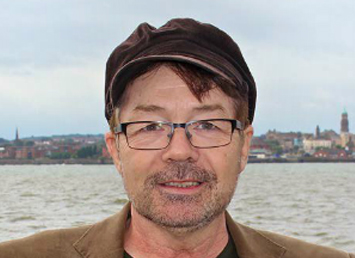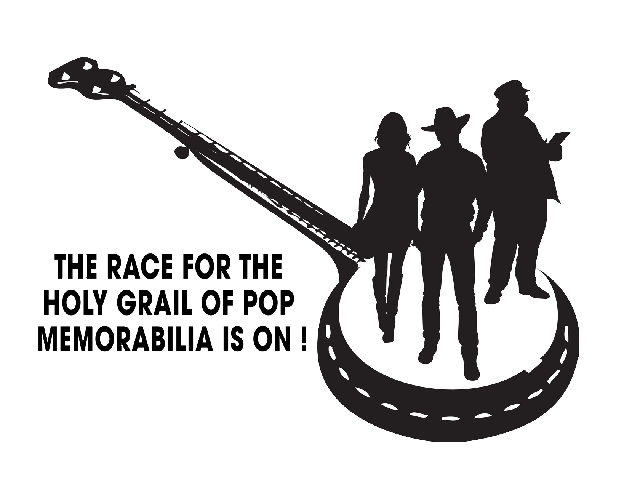Rob Fennah (Script Writer)

Rob Fennah began his career in the entertainment industry when he was still at school - joining his first band 'Buster' in 1974. Two years later the group signed to RCA records and had numerous top ten hits in Europe, Japan and Austrailia. By the age of 18 Rob had received a gold album and a number of best seller awards. Rob has performed at some of the worlds most prestigious venues including: The Sydney Opera House, Austrailia and The Budokan, Tokyo.
In 1984 Rob teamed up with his brother Alan and formed a new band, Alternative Radio. They were the first artists to sign to EMI's re-launched Parlophone record label
(made famous by The Beatles) on which they released the classic single, 'Valley Of Evergreen'. This song formed part of a BBC Radio 1 session which was subsequently voted 'Best Session of the Year'.
Rob's first venture into theatre happened in 1986 when he and Alan teamed up with friend and journalist, Mark Thomas, to write the highly acclaimed musical, 'First Night'. The show was premiered at the Glenda Jackson Theatre and was an instant hit, selling out every night and receiving rave reviews both locally and nationally. The theme song from the show, also entitled First Night, went on to become a Radio1 record of the week.
Teaming up with Liverpool footballer Craig Johnston proved to be an interesting collaboration. As Craig's guitar teacher, Rob was asked to help him write a song for the club and, just for a laugh, Rob accepted the challenge. In 1988 'The Anfield Rap' was released reaching number 3 in the UK charts. Rob is still trying to cope with the aftermath!
A meeting with author Helen Forrester in the 1990's resulted in Rob's adaptation of her most famous work, Twopence To Cross The Mersey. Rob is currently adapting the sequel to 'Twopence To Cross The Mersey' entitled, 'By The Waters Of Liverpool'.
Lennon's Banjo - Facts behind The Fiction
by Rob Fennah
“The very first tune I ever learned to play was ‘That’ll Be The Day’. My mother taught it to me on the banjo, sitting there with endless patience until I managed to work out all the chords” --- JOHN LENNON
A few years ago I attended a Beatles Convention with Allan Williams, the group’s first manager, infamously known as ‘The Man Who Gave The Beatles Away’. Throughout the day I watched as Beatles memorabilia changed hands for huge amounts and commented how amazed I was by the relentless interest in a band that twanged its last chord over four decades ago.
The subject soon got around to pop memorabilia, in particular, a piano formerly owned by John Lennon which fetched a cool one and a half million pounds at a Sotheby’s auction. As Allan and I argued about the morality of spending such an insane amount on a piano, a dealer listening in to our conversation perked up:
“That’s nothing compared to what Julia’s banjo would fetch!”
The dealer went on to tell me how Lennon’s mother, Julia, introduced her son to the world of music by teaching him to play Buddy Holly’s classic, ‘That’ll Be The Day’ on her banjo.
“So where is the first instrument the greatest rock ‘n’ roll legend ever learned to play - the catalyst that changed the world?” I asked.
“Missing”, the dealer replied, “and has been for 60 years”.
That should have been the end of the story, but a couple of weeks later my interest in Julia’s banjo was re-kindled when a news report told how a lucky bargain hunter had bought an old suitcase at a car-boot sale for fifteen pounds. When it was opened it was found to contain a priceless collection of Beatles memorabilia. How it ended up in a car-boot sale nobody knows. Then, within days of this discovery, a Hofner guitar was found in the loft of John’s old home in Menlove Avenue, Liverpool. This prompted the six million dollar question: Is it possible Julia’s banjo could still be out there too, just waiting to be found?
After interviewing several Beatles experts on the subject, including Lennon’s half-sister, Julia Baird, I was amazed to hear that everything the dealer had told me at the Beatles Convention was true.
The banjo went missing shortly after Julia Lennon was killed in a car accident; an event that haunted John for the rest of his life. In later years he immortalised her in his songs, ‘Julia’ and ‘Mother’. I think it’s fair to assume that the banjo she left behind, the only physical link John had left of her, must have been close to his heart. Indeed, further research revealed that Lennon not only talked about Julia’s banjo many times during interviews, it was also the subject matter of his opening statement in The Beatles Anthology.
“So, where would one start looking for the holy grail of pop memorabilia?” I asked Julia Baird jokingly, adding that; “perhaps John hid it somewhere?”
Julia pondered over what I’d said for a moment, looked me straight in the eye and replied: “Do you know something; after our mum died, that’s just the sort of thing John would have done”.
“Wow!” I thought, “What a great idea for a novel!”
'Julia's Banjo' Novel by Rob Fennah & Helen A Jones.
For more information on the book - JULIA'S BANJO visit: www.juliasbanjo.com
The Holy Grail of pop - will it ever be found?
by Rob Fennah.
It is always difficult finding something new to say about the Fab Four; after all, hasn’t everything already been written? Well no, not quite...
It’s common knowledge the first instrument John Lennon ever learned to play was his mother’s banjo. John gave many a heart-warming account of how his mother, Julia, spent hours teaching him to play Buddy Holly’s classic, That’ll Be The Day, “sitting there with endless patience until I had worked out all the chords.” It was Julia who turned John onto rock ‘n’ roll and actively encouraged him to pursue his musical ambitions much to the disapproval of his Aunt Mimi with whom he lived.
Julia Baird, John’s half-sister, who witnessed their mother teaching him said: “I can see John so clearly, concentrating intently on the mother of pearl backed banjo that belonged to his grandfather, who had brought it back from a sea trip and then left it to our mother.” It’s fair to say, therefore, that without Julia Lennon’s banjo there wouldn’t have been a Beatles and, without them, everything we know today would be different.
So where is the Holy Grail of pop memorabilia? Well that’s what this is all about; shortly after Julia Lennon died in 1958 the banjo went missing and no one has set eyes on it since. Remarkably, neither John’s family, nor any of the numerous Beatles experts, have been able to shed light on its whereabouts or what may have become of it. John never revealed what happened to the priceless relic and it remains the greatest mystery in pop music. However, one thing is certain; if it did resurface, the lucky finder would no longer have to worry about working for a living. In 2000, a Lennon piano went under the hammer at Sotheby’s for 1.5 million pounds which gives some indication as to what the banjo might be worth. Some argue it would fetch millions more, not just because it was the first instrument the greatest rock ‘n’ roll legend learned to play; it was the catalyst that changed the world!
But before we all start searching our attics and cellars, we must first overcome a major problem. Other than being banjo-shaped, what does the illusive instrument actually look like? Does it have any distinguishing marks or features; something to confirm its provenance? There are no photographs of John playing the banjo so how could it be authenticated? Julia Baird’s description does provide us with a couple of important clues; the banjo originated from overseas, circa 1930s, and it had a mother of pearl back. Research suggests this decorative feature only appeared on expensive banjos and helps rule out the notion that it might have been scrapped (beautiful old instruments are seldom destroyed and are kept for their aesthetic and ornamental value). More importantly, a mother of pearl inlay is rare and drastically reduces the list of possibilities by eliminating those banjos that don’t possess it. That said, it would still leave numerous contenders to choose from and that’s where the search would inevitably grind to a halt. Or would it?
Alright, so John Lennon’s signature might not be emblazoned across it but with today’s forensic technology it would certainly be possible to confirm provenance if John or Julia had left behind, say, a fingerprint or perhaps a strand of hair. Although this idea may seem a little far-fetched, it is not as outlandish as it sounds. Lennon’s Gallotone Champion acoustic guitar was authenticated, prior to its sale at Sotheby’s in 1999, by a drop of his blood! Original Quarrymen member, Rod Davis, recounts:
“John took the skin off the edge of his index finger while playing at St Peter’s Parish Féte in Woolton (1957). I remember seeing the bloodstain inside Lennon’s guitar while I was changing one of the strings. When Sotheby’s contacted me about authentication I told them about it and, although faint, the bloodstain was still there.”
The mystery surrounding Lennon’s missing banjo is still relatively unknown but as the news filters out no doubt hundreds will crawl out of the woodwork claiming to possess it. Could it still be out there having been stashed away for safe keeping and then forgotten about? Of course it could; that’s what happens with memorabilia; hey, we’ve all watched the Antiques Roadshow!
So, with that in mind, let’s raise a glass to Julia, John and the banjo that made it all possible. Without them, the world would have been a much quieter place.
The Holy-Grail of Pop - Will it ever be found? (PDF) Download
LENNON’S BANJO (The Stage Play)
Epstein Theatre, Liverpool - Tue 24th April – Sat 5th May 2018
Tickets available from: www.epsteinliverpool.co.uk